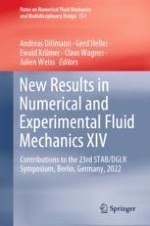This book offers timely insights into research on numerical and experimental fluid mechanics and aerodynamics, mainly for (but not limited to) aerospace applications. It reports on findings by members of the Deutsche Strömungsmechanische Arbeitsgemeinschaft, STAB (German Aerodynamics/Fluid Mechanics Association) and the Deutsche Gesellschaft für Luft- und Raumfahrt - Lilienthal Oberth e.V., DGLR (German Society for Aeronautics and Astronautics) and covers both nationally and EC-funded projects. Continuing on the tradition of the previous volumes, the book highlights innovative solutions, promoting translation from fundamental research to industrial applications. It addresses academics and professionals in the field of aeronautics, astronautics, ground transportation, and energy alike.
